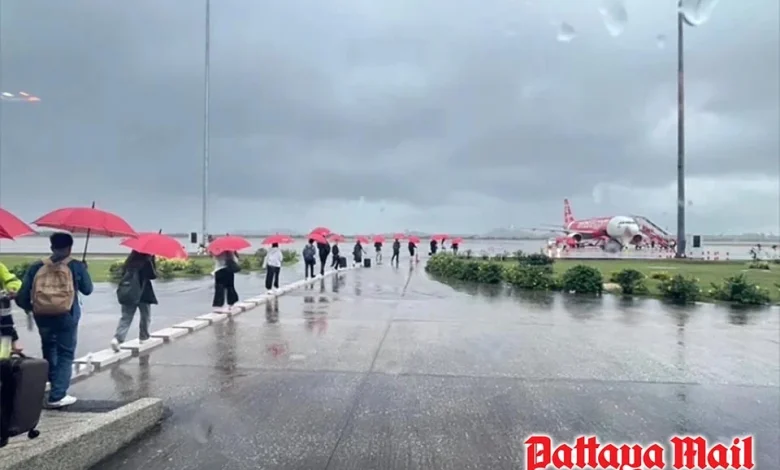Airports Dept. on 24-hour alert as southern Thailand faces renewed torrential rain

Floodwaters creep dangerously close to Narathiwat Airport’s Runway 20 as crews deploy long-distance pumps to keep operations running.
PATTAYA, Thailand – The Department of Airports (DOA) has stepped up 24-hour monitoring and emergency readiness at all southern airports amid warnings of new rounds of heavy rainfall and potential flash floods and landslides. Deputy Transport Minister Mallika Chirapanvanich ordered DOA to implement strict disaster-response protocols and prepare post-flood assistance measures for affected communities.
The directive follows alerts from the Department of Disaster Prevention and Mitigation naming Phatthalung, Songkhla, Pattani, Yala, and Narathiwat as high-risk provinces, with additional heavy rainfall expected in Nakhon Si Thammarat, Krabi, Trang, and Satun. All DOA-operated airports in the South have been instructed to intensively monitor their facilities and surrounding areas to safeguard runway operations. Airport teams are measuring water levels inside and outside the airfields, inspecting drainage systems, preparing backup generators, and coordinating closely with air traffic control, meteorological offices, disaster-prevention agencies, and provincial electricity authorities.
In addition to flood-prevention measures, DOA was told to assist local communities by facilitating military flights, medical evacuations, and DDPM aircraft delivering humanitarian supplies. High-pressure fire trucks are also being prepared to clean public areas and homes once floodwaters recede.
DOA Director-General Danai Ruangsorn said Narathiwat Airport is currently under the highest level of observation. Due to persistent heavy rainfall, water pooling near Runway 20 has required long-distance pump installation coordinated with provincial DDPM authorities. One inbound-outbound road lane remains serviceable, while parts of the airport car park are submerged and unusable.
Other DOA-operated southern airports remain open, with runway, taxiway, and apron water levels within operational standards. Drainage systems are functioning normally, though motorists are advised to drive with caution as some provincial roads are waterlogged.
Passengers traveling to airports in affected areas are strongly advised to allow at least 3–4 hours for transit due to potential flooding and transport delays. DOA said it will continue monitoring conditions and issue immediate updates should emergency situations occur.





